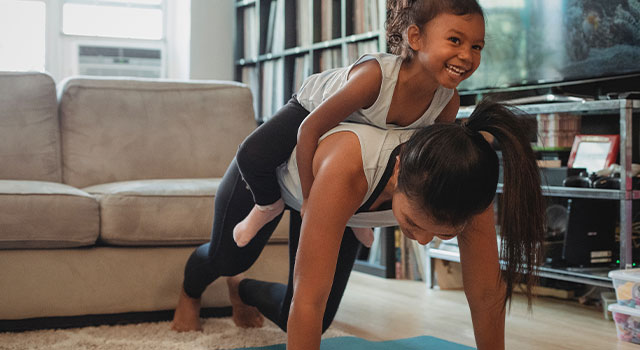 Note: the activities here do not replace an eye exam and in-office sports vision training program from an eye doctor experienced in sports vision.
Note: the activities here do not replace an eye exam and in-office sports vision training program from an eye doctor experienced in sports vision.
When athletes consider the skills they need to succeed, agility and strength often come to mind. But those aren't the only skills that matter. Many athletes don’t realize that, when it comes to conditioning, their eyes are an important asset.
An athlete’s capacity to notice, understand and respond to events on the field, both near and far, has a substantial influence on the quality of their play. The intricate capabilities of their visual system are required to dunk that basket, return that serve, receive that pass or knock it out of the ballpark.
There is an entire area of optometry that provides sports vision training, with research to back it up. According to a study published by the Journal of Sports Science and Medicine, visual abilities like peripheral perception and reaction time can be improved by means of appropriate visual training.
Sports vision exercises can help improve your peripheral vision, visual memory, hand-eye coordination and much more. Who wouldn't want to improve their game by doing eye exercises?
Sports Vision Training Exercises at Home
Your eye doctor will recommend an in-office sports vision training program for you based on the sport and the visual abilities you want to develop. Here are some very basic exercises you can do at home until you get to your optometrist's office.
While home-based exercises are a good first step toward upping your performance, they aren’t a substitute for a sports vision training program designed by an optometrist that is tailored to your individual strengths and weaknesses.
20-20-20 Rule
Your eyes, like your body, need to be as agile as possible. Switching your focus between near and distant objects is a simple way to enhance your focusing skills at home. Look up from your computer and focus on anything 20 inches away, then something farther away, such as looking out a window.
Most sports rely on the ability to change focus from near to far objects, such as a ball or other players.
Visual Memory Games
One way we understand and comprehend information is via visual memory. It's all about recalling where players are on the field when receiving a pass, or how much spin or curvature the ball had during the previous play. When you play memory games like a children’s matching game, you're teaching a part of your brain to remember information accurately and quickly. Playing memory games can help improve your speed.
The Turning Tray
Practice reading words in motion. Attach a piece of paper with words to a turning tray and move it at different speeds. Alternatively, attach the paper to a moving door or a bouncing ball. Experiment with font, color, size and familiarity of words to see how many you can read and how quickly.
This exercise can help improve your dynamic visual acuity, which is needed in fast-paced sports like hockey, basketball and tennis. Athletes who play these sports need to be able to see objects clearly while they are moving quickly.
Sidelong Glance
Peripheral vision allows you to see another player from the opposing team rushing toward you, or where your teammate is preparing to pass, from the edge of your visual field. When you're using a computer or walking outside, practice ‘viewing’ from the sides of your eyes, both right and left. Look for details in your peripheral vision or lean your head to one side to ‘scan' the activity with a sidelong glance.
One-Eyed Monster
Depth perception is one of the most essential visual tricks your binocular vision provides. This helps you know how far the goal post is. Train each eye separately by kicking or catching the ball with only one eye open. Alternatively, practice this skill by holding a drinking straw at arm’s length and trying to drop a tiny pebble or balled-up piece of paper through the straw with your free hand.
Ping-Pong
Ping-Pong, or table tennis, isn't just a classic fun game, it’s an excellent way to enhance your eye-hand coordination. It's a fast-paced game that trains the brain to determine the speed of a moving object and respond accordingly.
Ready to improve your game? Schedule an appointment with The Sports Vision at Eye Trends, where our eye doctor will assess your visual skills and design a customized sports vision training program to boost your performance in your chosen sport.
Our practice serves patients from Houston, Spring, Woodlands, and Conroe, Texas and surrounding communities.
Q: What is sports vision training?
- A: Sports vision training is a custom-made program that enhances communication between the brain, body, and eyes when participating in sports. Athletes, both professional and amateur, benefit from sports vision training because it helps them process information and react faster and more accurately to what they see on the field.Sports vision training involves a set of strategies and exercises that teach the brain and body to respond to what the eyes see more efficiently and accurately.
Q: Is sports vision training beneficial for everyone?
- A: Whether you play basketball, football, hockey or tennis, sports vision training is perfect for anyone of any age seeking to take their performance to the next level.
